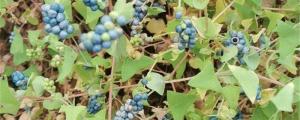How to Prepare Dry Tree Seeds for Planting
Planting trees from seed is an economical and environmentally friendly way to grow a new forest. However, before planting, it is essential to prepare the seeds properly to ensure successful growth. Here are some steps to follow for preparing dry tree seeds for planting:
Collecting Seeds
The first step in preparing tree seeds for planting is to collect them. You can either collect seeds from a tree in your area or purchase them from a reputable seed supplier. Look for mature fruits or cones from the tree as they will contain ripe seeds. Before collecting, ensure that the seeds are dry and mature. You can test this by gently squeezing the fruit or cone; if it’s dry and the seeds can fall out easily, then it’s ready for collection.
Cleaning Seeds
After seeds have been collected, they need to be cleaned to remove impurities such as dirt, debris, and leftover fruit or cone fragments. Use a fine-meshed sieve or strainer to remove coarse particles initially. Then, pour the seeds into a bowl of water and stir them around with a spoon to help break up any remaining debris. The floating seeds are usually not viable, so discard them. You can then transfer the seeds onto a paper towel to dry in the sun or a warm, dry place for a few days.
Stratifying Seeds
After cleaning and drying the seeds, it's time to stratify them. Stratification is a process of exposing seed to cold and moisture, mimicking the natural process of winter dormancy. This helps break down the seeds' protective covering, allowing them to germinate better when planted. To stratify the seeds, moisten a paper towel or a coir peat potting mix with water. Then, add the seeds and cover them with another layer of moist peat or paper towel. Keep the seeds in the fridge or another cool place for several weeks, depending on the species. Check on the moisture level occasionally and re-moisten if necessary.
Sowing Seeds
After stratifying, the seeds are ready for sowing. Plant seeds in nutrient-rich soil or potting mix in small pots or seed trays. The soil should be loose, moist but not wet, and have good drainage. Fill the pot with the soil and make indentations about 1 cm deep, place one seed in each hole and lightly cover with soil. Seedlings will appear within several days, depending on the species. Keep the soil moist and in a bright, warm place. When they are big enough, you can transplant them outdoors to their designated location.
Conclusion
Preparing tree seeds for planting can be a rewarding experience that allows you to grow your own forest, but it requires some preparation and patience. Collecting and cleaning the seeds, followed by stratification, and then sowing in nutrient-rich soil will set you up for success. With the right conditions, you can watch your seeds grow into beautiful trees that will contribute to a greener environment for many years to come.

 how many times do yo...
how many times do yo... how many planted tre...
how many planted tre... how many pine trees ...
how many pine trees ... how many pecan trees...
how many pecan trees... how many plants comp...
how many plants comp... how many plants can ...
how many plants can ... how many plants and ...
how many plants and ... how many pepper plan...
how many pepper plan...































